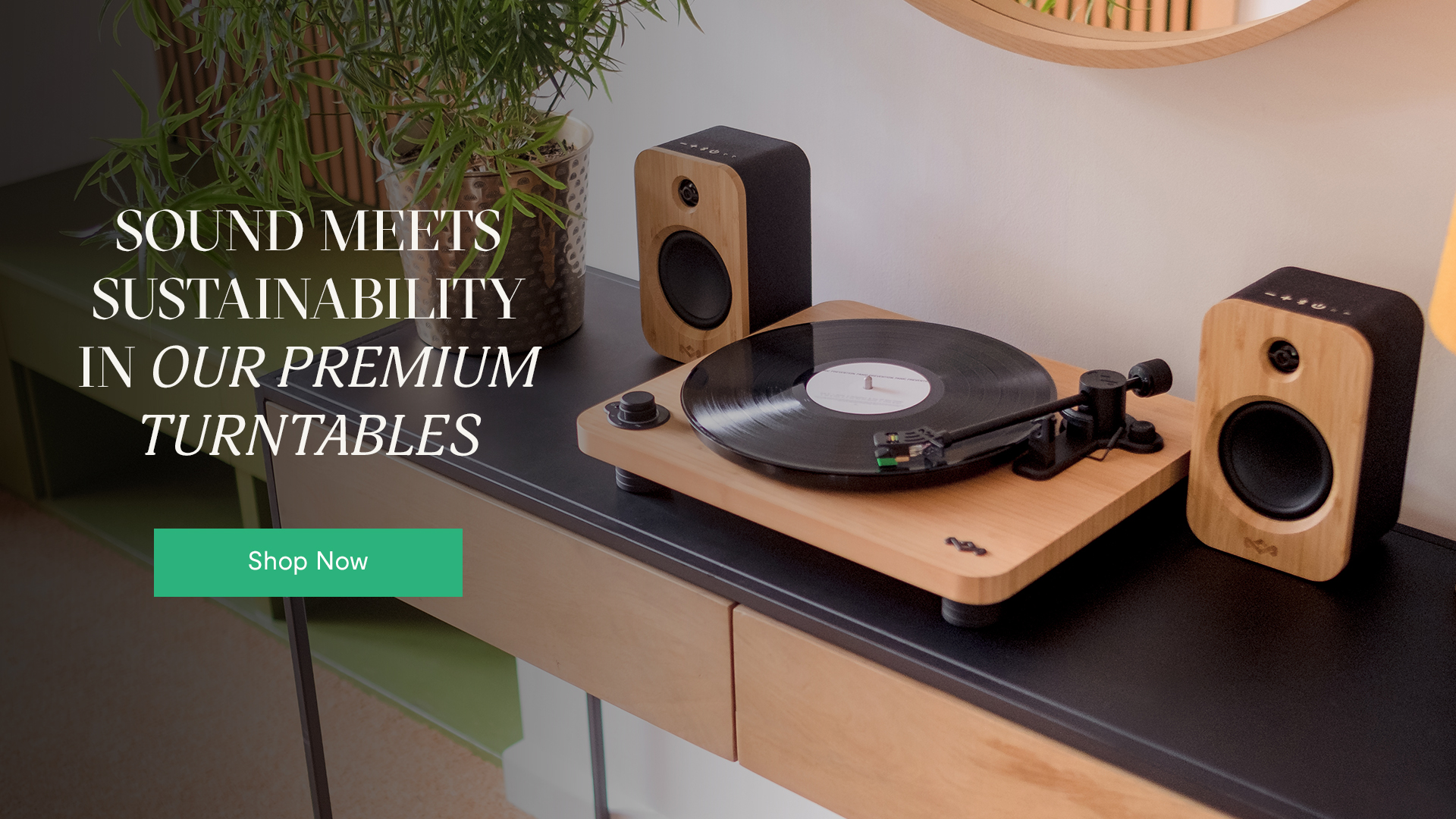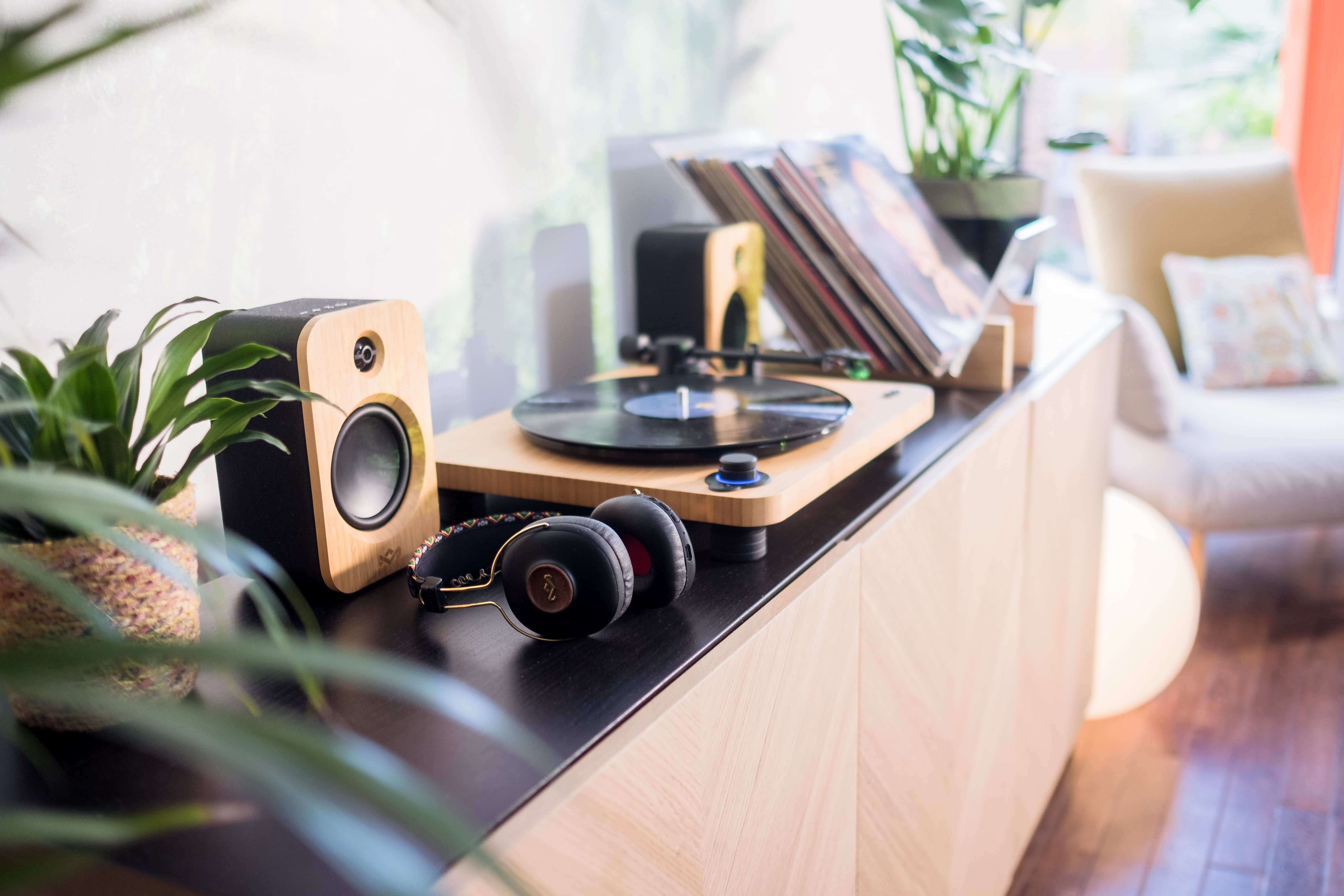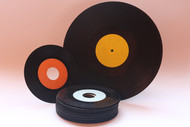Vinyl Record Sizes - 33 vs 45 vs 78 RPM Explained
Posted by House of Marley on Jan 11th 2024
Vinyl records, those circular discs of nostalgia, have been the heartbeat of the music industry for decades. Even in our digital age, the resurgence of vinyl has proven its timeless appeal. For many, the tactile experience of placing the needle on a spinning record, the gentle crackle before the music starts, is unparalleled. These records have become symbols of a bygone era, yet they continue to enchant new generations. From the artwork on the covers to the unique sound quality, there's something magical about vinyl. It's no wonder vinyl collecting has become a passionate hobby for many.
The Evolution of Vinyl Records
Vinyl records have a storied history. They evolved from their shellac predecessors, bringing about a revolution in the music industry. The transition from shellac to vinyl was not just about material; it was a shift that impacted sound quality, durability, and the very way we consumed music.
Early inventors and music enthusiasts could hardly have imagined how these records would transform the music scene. From Thomas Edison's phonograph to modern turntables, vinyl's journey has been nothing short of fascinating. Their evolution also mirrored the changing tastes and technologies of the times. The debate between direct drive vs belt drive turntables is significant in understanding vinyl's evolution. Find out which type suits your listening preferences.

Understanding the Different Record Sizes
From the early days of phonographs to the modern turntables, the sizes and speeds of these types of records have evolved, each bringing its unique flavor to the auditory experience. Understanding the different record sizes is crucial, not just for collectors but for anyone with a budding interest in vinyl.
Each size tells a story, a tale of technological advancements, musical trends, and shifts in consumer preferences. Let's delve into these sizes, exploring their origins, significance, and the unique sounds they offer.
The 78 RPM Records
The 78 RPM record, often made of shellac, was the pioneer of the record world. The unique characteristics and sound quality of the typically 10-inch records (although others were as vast as 12 inches) set the stage for the music revolution. However, as with all pioneers, the 78s saw a decline, overshadowed by their successors, primarily due to their fragile nature and limited playtime.
These records were the go-to for early jazz, blues, and swing music, capturing the essence of those eras. Their size and speed were standardized, making them a universal format for a while. But as music evolved and technology advanced, the need for longer play times became evident.
The Advent of 33 RPM Records
Enter the 33 RPM records. These records, with their feature of extended play, allowed for more tracks and longer playing time. The shift from 78s to 33s was accompanied by technological advancements, enhancing sound quality.
While they had their golden era, the 33s too faced competition, but their legacy in albums and LPs remains undeniable. These became the standard size for albums, allowing artists to craft a cohesive musical journey over multiple tracks. The artwork on these album covers also became iconic, adding a visual element to the auditory experience.
The Dominance of 45 RPM Records
The 45 RPM record or “45s”, with their smaller size, became the darling of the jukebox era. Compared to the 33s and 78s, the 7-inch vinyl records offered a balance between material quality and sound clarity. Their popularity persists, especially for singles and EP records, making them a staple for vinyl collectors.
These records were perfect for capturing hit singles, and their portability made them favorites for jukeboxes in diners and bars. The 45s also allowed artists to release individual tracks without committing to a full album, giving them more flexibility in their music releases.
The Technicalities of Playing Different Record Sizes
Playing different record sizes isn't just about having a turntable; it's about having the *right* turntable. For those new to vinyl, understanding the difference between a turntable vs record player is crucial. Vintage records on modern turntables can sometimes be a mismatch, leading to sound distortions.
However, with the right equipment and a bit of know-how, vinyl enthusiasts can ensure optimal sound quality, making every spin a trip down memory lane. It's essential to understand the nuances of each record size to ensure they're played at the correct speed. To get the best out of your vinyl experience, it's essential to know the parts of a record player and how they work together. Additionally, the stylus and cartridge setup can significantly impact the playback, making it crucial for vinyl enthusiasts to invest in quality equipment. If you're experiencing poor sound quality, it might be due to a damaged turntable stylus. Discover how to identify and resolve this issue.
The Revival of Vinyl Records in the Modern Era
The 21st century saw vinyl records making a comeback. Beyond just recorded sound, it's the emotional connection, the nostalgia, and the tangible experience that vinyl offers. In a world of streaming and playlists, listening to vinyl records on a vinyl record player stands as a testament to the authenticity and richness of recorded music.
This revival isn't just about older generations reminiscing; younger folks, Gen Z, and millennials are also diving deep into the vinyl world. The tactile nature of vinyl, combined with the rich sound, especially of classical music, offers a break from the intangible digital music world.
33 vs 45 vs 78: Which Record is Better?
When diving into the world of vinyl, one of the most common questions budding enthusiasts have is: which record size is the best? The answer isn't as straightforward as one might think.
Each record size, be it the 33, 45, or 78 RPM, has its unique characteristics and advantages. The 33 RPM, for instance, offers long play, making it ideal for albums. The 45 RPM, with its shorter playtime, is perfect for singles, while the 78 RPM, being the oldest of the bunch, has a charm that appeals to vintage collectors. Sound quality can vary, with many arguing that the 45 RPM disc offers the best audio experience due to its wider grooves.
However, the "best" record often boils down to personal preference and the specific recording quality of the vinyl in question. It's also worth noting that certain genres or eras of music might be better represented in one format over the others. In the end, the joy of vinyl collecting is in the journey of discovery, and there's no wrong choice when it comes to enjoying the music you love. With that said, if you’re looking for a starting point, check out our guide on how to start collecting vinyl records to help you embark on your journey of musical discovery.

House of Marley Turntables: The Perfect Companion for Your Vinyl Collection
For those diving into the world of vinyl, or seasoned collectors looking for an upgrade, House of Marley offers turntables that are not just instruments, but pieces of art. With our commitment to quality, sustainability, and impeccable design, a House of Marley turntable ensures that every record, be it a 33, 45, or 78, is played to perfection. Dive into our collection and find the turntable and matching speakers or headphones that resonate with your vinyl soul. Our turntables are designed keeping in mind the nuances of each record size, ensuring a seamless and enriching listening experience no matter the record speed or size. Explore our exclusive bundles of record players with speakers, where quality meets sustainability and design.
There you have it, a journey through the world of vinyl record sizes, and the significance of each. Whether you're a newbie or a seasoned vinyl collector, understanding the nuances of these records enhances the listening experience. So, next time you're at a record store or browsing through your collection, you'll know the story behind each spin and groove. Happy listening!













